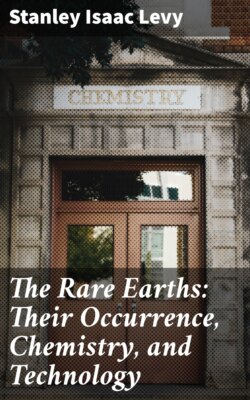Читать книгу The Rare Earths: Their Occurrence, Chemistry, and Technology - Stanley Isaac Levy - Страница 173
На сайте Литреса книга снята с продажи.
(b) The Titanates Yttrocrasite.
Оглавление[55]—This is a complex titanate of rare earths (chiefly yttria earths) with lime, thoria, and oxides of lead, iron, uranium, etc.; it has a considerable water content. An approximate formula is R´´O,RivO₂,3R´´´₂O₃,16TiO₂,6H₂O, where R´´ = (Ca,Pb,Fe), Riv = (Th,U), and R´´´₂O₃ = rare earths. No constitutional formula can be given; it will be noticed that the amount of titanium dioxide is considerably more than is required to combine with the bases present (cf. also Delorenzite below). It is radioactive.
[55] Hidden and Warren, Amer. J. Sci. 1906, [iv.], 22, 515; also Zeitsch. Kryst. Min. 1907, 43, 18.
Imperfect crystals only were found, apparently belonging to the orthorhombic system. No crystallographic data could be determined.
The mineral is black, closely resembling polycrase and euxenite (q.v.) in appearance. Hardness 51⁄2-6; sp. gr. 4·80.
It is infusible, and not easily soluble in acids. Hydrofluoric acid decomposes it, and the powdered mineral is also slowly attacked by boiling concentrated sulphuric acid.
It was found in 1904 by Barringer, in Burnet Co., Texas.
